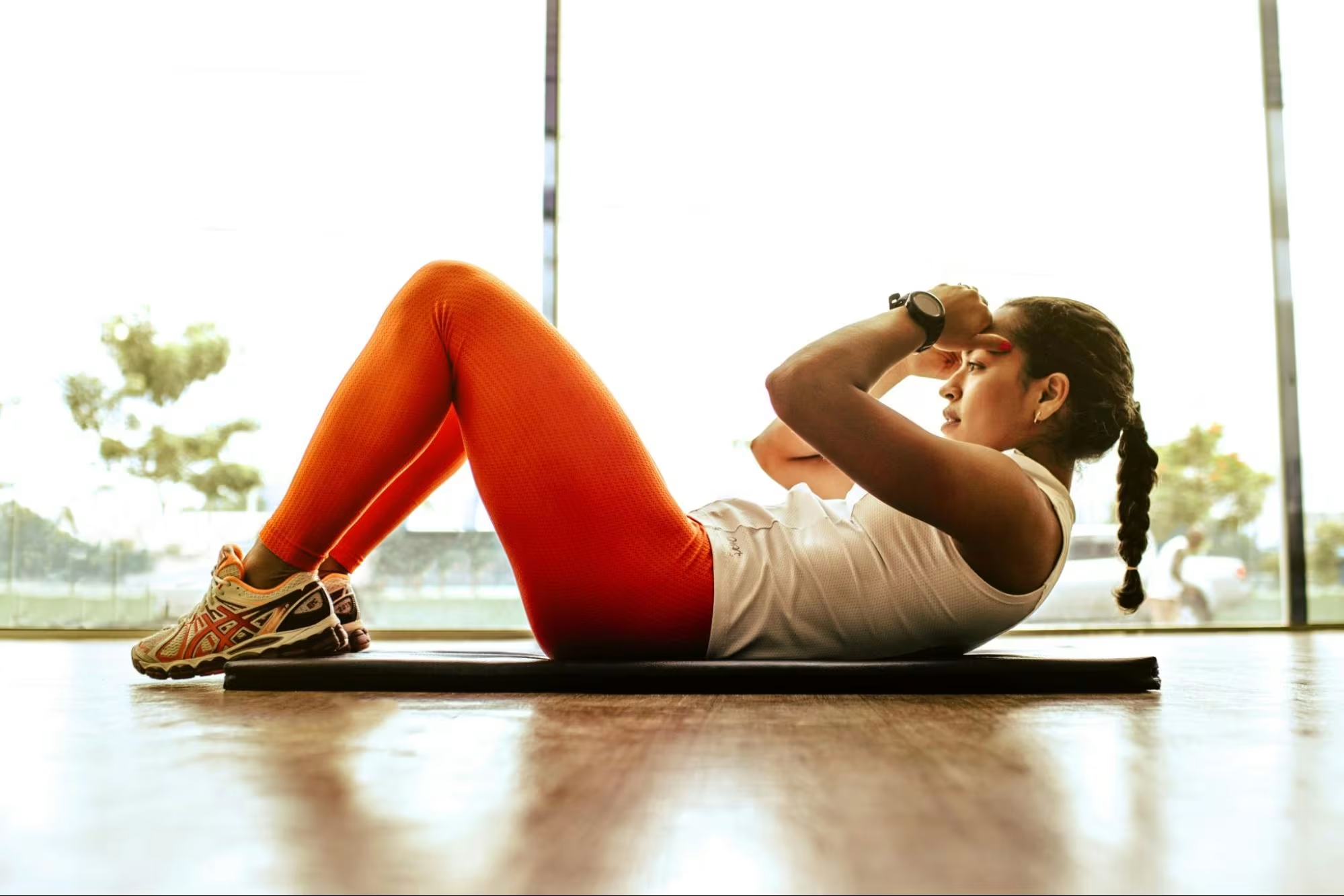Beginners strength training work-out focuses on foundational exercises that build muscle, improve endurance, and enhance overall fitness.
Strength training is one of the most effective ways to improve overall health and fitness. For beginners, it may feel daunting at first, but with the right approach, it can be gratifying. Whether your goal is to increase muscle mass, burn fat, or improve your overall strength, starting with the basics will help set you on the path to success. This article will guide you through a beginner-friendly strength training workout to help you build a solid foundation.
Before diving into your first workout, you must understand that strength training is more than lifting weights. It’s about using resistance to stimulate your muscles, making them stronger and more resilient. By starting with basic exercises and focusing on proper form, you'll set yourself up for long-term progress and minimize the risk of injury.
Why Strength Training Is Important for Beginners

Beginners strength training work-out offers numerous benefits. It helps build muscle, burn fat, improve bone density, and boost metabolism. Furthermore, strength training is crucial for improving functional strength, making everyday activities like carrying groceries or climbing stairs easier. Most importantly, it increases overall health, boosts energy levels, and even enhances mental well-being by releasing endorphins.
While it’s essential to challenge your body, beginners should focus on proper form and gradual progress. Starting with simple, full-body movements that target major muscle groups will help you build strength and confidence in your workouts.
Warming Up Before Workout

Giving your body a proper warm-up before you begin your strength training routine is essential. Warming up prepares your muscles and joints for the work ahead, helping improve your performance and reducing the risk of injury.
Start by standing up straight and focusing on your breathing. Take a few deep breaths to settle into the moment. Let’s ease your body into the session with some light movement. Start with dynamic stretches—these differ from static stretches, which involve movement to get your blood flowing. Begin with arm circles. Extend your arms to the sides and slowly make small circles, gradually increasing the size. Reverse direction after 10-15 seconds to ensure both sides are equally engaged.
Next, let's activate your lower body. Try leg swings. Stand near a wall or a sturdy surface for balance, then swing one leg forward and backward in a controlled motion. Do this for 10-15 reps on each leg. This will gently stretch your hip flexors and warm up your hamstrings.
To keep things moving, transition into some bodyweight squats. Stand with your feet about shoulder-width apart. Lower your body by bending your knees and pushing your hips back as if you're going to sit into a chair. Go down until your thighs parallel the ground, then press through your heels to stand back up. Repeat this 10-15 times. These squats will warm your legs and activate your core, preparing your body for the strength training ahead.
Now that your joints and muscles are loosened up, it's time to get more blood flowing. Finish the warm-up with some light cardio, like walking or jogging in place. Keep it easy—just enough to get your heart rate up and ready for the workout. Aim for 3-5 minutes of movement to ensure your body is thoroughly prepared.
Beginners Strength Training Work-out Plan
As a beginner, focusing on full-body workouts that target all major muscle groups is essential. This workout plan includes simple, compound movements that challenge multiple muscles simultaneously. Aim for 2-3 strength training sessions per week. Allow at least one rest day between each workout.
Here are some exercises you could try on your beginner strength workout.
Bodyweight Squats
These are a fantastic way to target your legs and glutes while engaging your core. Stand with your feet about shoulder-width apart, keeping your chest upright and your back straight. Slowly lower your body by bending at the knees and pushing your hips back, as if you were about to sit in a chair. Lower yourself until your thighs parallel the floor (or go as low as you comfortably can), then push through your heels to return to standing.
Push-Ups
This classic exercise targets your chest, shoulders, and triceps while engaging your core for stability. Start by placing your hands slightly wider than shoulder-width apart on the floor. Position your body into a straight line from head to heels—think of yourself as a plank. Lower your body toward the floor by bending your elbows, then push yourself back to the starting position.
Dumbbell Rows
Grab a pair of light dumbbells (or use a resistance band if you don’t have dumbbells), and bend your knees slightly while hinging at the hips. Your upper body should be at a 45-degree angle to the floor. Hold the dumbbells in each hand with your palms facing inward. Pull the dumbbells toward your ribcage, squeezing your shoulder blades together at the movement's top. Lower the weights back down slowly, maintaining control. This exercise is all about targeting the upper back and biceps, helping to create a strong and balanced upper body.
Glute Bridges
Lie on your back with your knees bent and feet flat on the floor, hip-width apart. Place your arms by your sides, palms facing down, for stability. Push through your heels and lift your hips toward the ceiling, squeezing your glutes at the movement's top. Hold for a second, then slowly lower your hips back to the ground.
Read Also: POST-WORKOUT MEAL IDEAS
Plank
This is one of the best exercises for building core stability. It engages your abs, lower back, and shoulders. Start by positioning yourself on the floor in a forearm plank position. Your elbows should be directly beneath your shoulders, and your body should form a straight line from head to heel.
Keep your core tight and hold the position for 20 to 30 seconds. Focus on breathing steadily, and avoid letting your hips drop or your back arch. If the plank feels too challenging, lower your knees to the floor, but keep your body straight from your knees to your head. Aim for 2-3 sets. As you get stronger, you can increase the time you hold the plank.
Dumbbell Shoulder Press
Stand with your feet shoulder-width apart and hold a dumbbell in each hand, with your elbows bent at 90 degrees and your palms facing forward. Slowly press the dumbbells overhead until your arms are fully extended, then lower them back to the starting position.
This exercise targets the deltoids (shoulder muscles), improving upper body strength and stability. Start with light dumbbells and aim for 10 to 12 reps for 3 sets. You can use resistance bands or water bottles for a lighter alternative if you don't have dumbbells.
Walking Lunges
To finish the workout, we’ll move on to walking lunges, a great way to build strength in your legs and glutes while improving balance. Stand tall and take a step forward with one leg. Lower your hips until both knees are bent at about 90 degrees. The back knee should hover just above the floor. Push off your front foot and step forward with the other leg.
Focus on taking a steady step and maintaining control as you lunge. This exercise is excellent for targeting your quads, hamstrings, and glutes. Aim for 10-12 lunges per leg for 3 sets.
Conclusion
As you finish your workout, take a few minutes to cool down. Stretching your muscles after a workout is essential for flexibility and recovery. Focus on your hamstrings, quads, lower back, and shoulders, holding each stretch for 20 to 30 seconds.
Strength training doesn’t have to be complicated to be effective. By starting with simple, beginner-friendly exercises and focusing on form, you can build a solid foundation for your fitness journey. Progress takes time, so be patient and celebrate every slight improvement.
BEGINNERS STRENGTH TRAINING WORK-OUT
















Responses (0 )